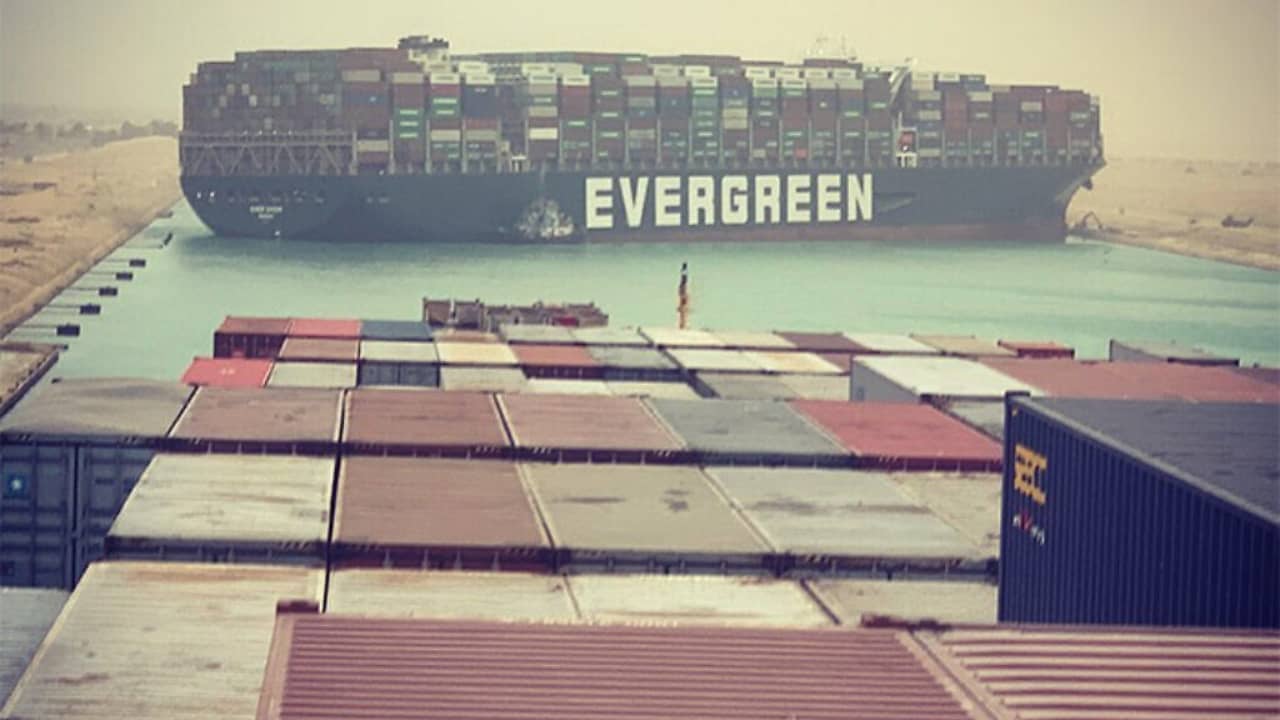
When and Why Ocean Freight Rates Will Go Down
6-minute read
Not good news for importers & exporters. The “profit bonanza” being enjoyed by container shipping lines at present, through skyhigh freight rates, are set to remain in place for a couple of years more.
The dim light at the end of the tunnel, according to respected analysts Drewry, is that the carriers themselves will cause the demand-and-supply equation to come back closer to normal in 2023, when a glut of new tonnage they have ordered comes on stream.
That tonnage will increase the supply of shipping space in a world where, one hopes, the current supply chain dislocation caused by COVID-19 has largely resolved, and therefore the extra space will dilute the ability of carriers to keep freight rates at the heights they now enjoy.
The above is a broad summary of major insights gleaned from recent reports, webinars and data broadcast in the international shipping market, the most striking of which were initiated by Drewry.
The recent article set the high-level scene in its report of Drewry’s comments that “extreme” freight rates have become the norm since the middle of 2020. “Extreme” being defined as at least 50% higher than the five-year historical average, and which last for at least three months (so as not to confuse them with peak-season freight rate spikes).
Drewry’s Reefer Shipping Forecaster report shows the weighted average of reefer freight rates across the top 15 reefer-intensive trade lanes, jumped 26% in the first quarter, a major concern to New Zealand exporters of perishables.
For carriers, this means a profit bonanza – as an example, HapagLloyd has posted a net profit of US$1.45 billion for the first quarter of the year, compared with just US$27 million for the same period of last year.
The quarterly profit was more than the line made in the whole of the previous year. Drewry believes this scenario is set to continue for at least another two years.
Naturally, carriers are taking advantage of this and are charging extreme rates simply because they can, and because to them it is compensation for years of thin margins.
They were in a loss situation as recently as 2018. In fairness, their own costs have increased because charter rates have gone crazy.
Analysts Vessels Value report that: “Time charter (TC) rates for container ships have seen an unprecedented increase in rates since the end of 2020 one-year TC rates have surged to extraordinarily new highs with 8500- TEU values rising to a record US$54,000 per day for April.
This is an increase of 350% since June 2020.” Carriers are deploying every scrap of tonnage they can find but they are paying through the nose to get it. It is also fair to say that they are not to blame for creating the crazy situation the shipping world currently finds itself in.
When COVID-19 hit, and world trade initially slumped, carriers did reduce sailings, apply slow steaming and cut supply, expecting – as did everyone – we were in for an extended trading depression.
But then people in lockdown couldn’t spend their money in restaurants, in bars, on movie tickets and entertainment, so they began a splurge of online buying that hasn’t stopped since.

That fired up the demand for shipping. Drewry estimates there is 20% more demand for shipping space in Q2 2021 than at the low point of 2020. Carriers responded by deploying tonnage as fast as they could.
Ships destined for scrapping were deployed instead. Ship speeds were accelerated. Container ship speeds hit a five-year low in May 2020 but since have jumped 5.5%, from 13.99 knots to 14.76 knots, with some of the larger types increasing by more.
But what carriers could not solve, and what is the principal reason for the current supply chain glut, is terminals being unable to cope with the demand surge. Terminals worldwide have continued to operate within COVID-19 restrictions, including social distancing and restricting workers to specific “bubbles”.
In the hinterland, roading and rail companies, container parks and warehouses have worked under similar restrictions. It is easy to forget that elsewhere in the world, industry is operating under much tougher conditions than us here in New Zealand, who can measure our strictest lockdowns in terms of a number of weeks.
Consequently, equipment shortages have become chronic. Reduced port productivity, tight container equipment availability and a shortage of slot capacity have been key drivers in forcing up freight rates.
In normal times, such factors would inhibit shipping lines. Now, we have the strange paradox of carriers making their best profits because port productivity has gotten worse and the supply chain has become disrupted.
So, what will cause freight rates to fall back to more rational levels? Ironically, one of the main answers is actions taken by the carriers themselves to increase supply.
Drewry says that investment decisions being made now by shipowners, for boxships that will not arrive on the water for another two years, will boost available container slots and therefore bring the demand-and-supply equation more into equilibrium.
Buoyed by the excellent profits to be had, owners have reacted by placing an order book that was bigger in the first quarter of 2021 than in the whole of 2020. Drewry describes this as a “huge rush” of orders for something like 170 ships equating to 1.8 million TEUs of space.
The problem for the shipowners is the two-year lag between placing the order and getting the ship, so these vessels will not arrive in time to cash in on the current bonanza. It is the typical cycle that has affected shipping for decades.
A supply-demand imbalance encourages shipowners to build new ships. But when the ships arrive, they tip the supply balance the other way. For importers & exporters, two years will seem a long time off.
Drewry predicts freight rates to rise 23% in 2021 before dropping 9% in 2022, then the flood of new tonnage arrives in 2023. In that time, one hopes port productivity will get back to normal levels, further correcting the present imbalance.
At least, there is light at the end of the tunnel for beleaguered shippers.
Physical and Logistics Challenges of Ultra-Large Container Ships

A master mariner has written an article on the physical and logistics challenges of ultra-large container ships (ULCCs).
Like everyone in the shipping world, he is waiting for the official findings into the reasons why the Ever Given grounded in the Suez Canal.
However, he has studied the AIS (automatic identification system) and GPS feedback of the ship’s movements and found she was doing about 11-12 knots at the time of grounding, compared to the Suez norm of about 8-10 knots.
“I know from my own experience . . . that the pilot will order an increase in speed to counteract windage and increase rudder activity,” he says, which leads him to surmise that excess windage from higher wind gusts took effect before the rudder was able to counteract the thrust.
“If the ship was even only doing 10 knots at the time of grounding, the momentum of 100,000-plus tonnes displacement was certainly enough to put her pretty well hard and fast into the canal bank.”
He also comments on the stresses and strains on a ULCC’s structure caused by high stacking, and the discharge and loading by multiple quay cranes at once.
“Who checks these stacks are all correctly lashed and secured? It is impossible to see from the deck, and once the ship is ready to sail, it’s too late. These large ULCCs are subject to parametric rolling, to which no one has yet come up with a complete answer.”
“Hence the huge increase in the loss of containers overboard in recent years, and these are only the ones we hear about! “
SOURCE: NZ Shipping Gazette
P.S. Easy Freight Ltd helps New Zealand importers & exporters to save money on international freight and reduce mistakes by guiding how to comply with Customs and biosecurity rules.
➔ Contact us now to learn how we can assist you.
